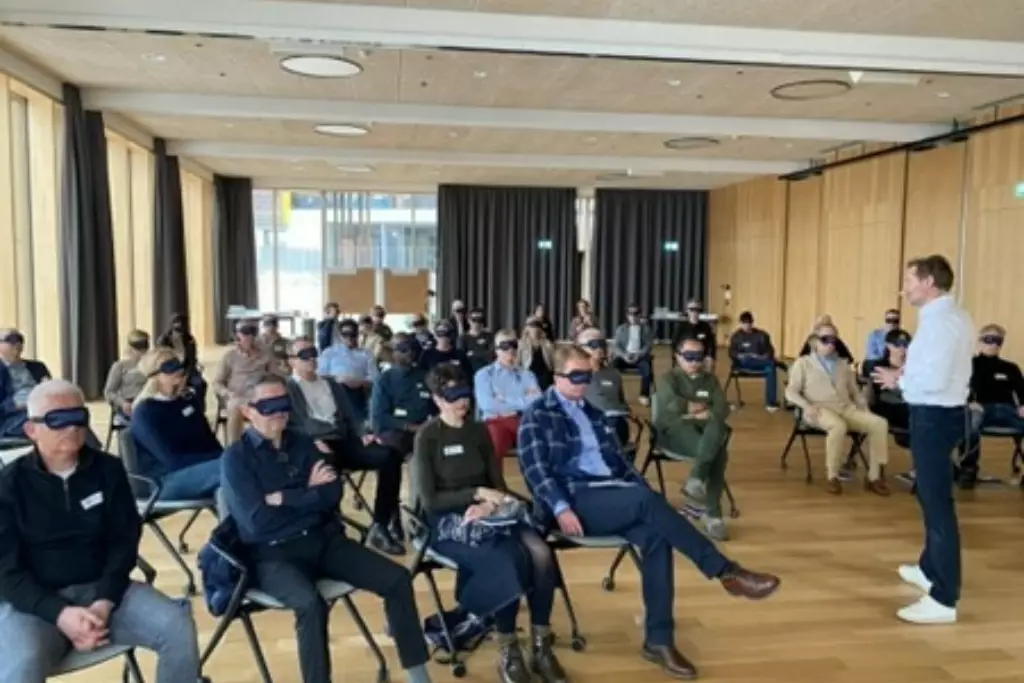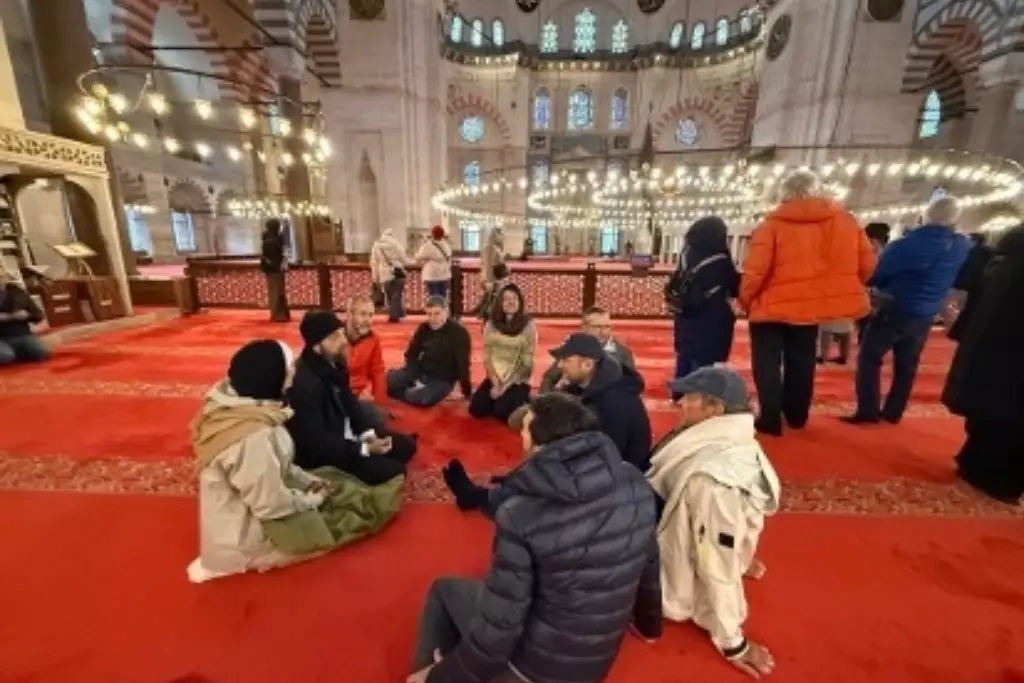Get in touch
How do you deal with loss of control?

- Duration
- 7 min read
- Author
- By Ekkehard Kuppel
The summit of the Finsteraarhorn (4274m) has been on my bucket list for quite some time. It is the highest peak in the Bernese Alps, the 9th highest in the Alps, and the third most ‘prominent’ in the Alps. Prominence, as the elevation in reference to its surrounding terrain gives an indication of the vistas one can have from the top as well as how visible the mountain is from the distance. What makes Finsteraarhorn particularly appealing to us is a glacier and ice field that allow us to skin (on skis) all the way up to 4000m. From there some rock climbing takes you to the summit. Several attempts in the past could not be realised for bad weather, snow conditions or overbooked Finsteraarhorn hut. And this April weather, snow and bookings aligned so up we went to Jungfraujoch, spent the night at Finsteraarhorn and summited with the most amazing views. Next morning we climbed another peak before we initiated a 2000m skiing descent on beautiful spring snow into the Valais valley. At about 1700m there was no more snow, spring had arrived. We tied our skies to the backpacks and started the 45’ walk to the next bus stop. As we crossed a small mountain river, I slipped on a stone and fell into the river landing on my left shoulder. Later that evening the X-ray didn’t show any broken bones, the MRI taken a couple of days later, however, showed that two ligaments in my left shoulder were broken, i.e. detached from the bone and therefore unable to properly function. Two friends independently recommended a shoulder specialist in Zurich who scheduled the surgery for the following week.

And here I am in a clinic in Zurich one day after the surgery. The peak performance in the Swiss mountains changed dramatically into an experience of total loss of control. The 2h15’ surgery came with 4 anchors being screwed into my bones and about 20 threads pulling the ligaments and muscles back to the bones. On the picture it looks like a piece of macrame: it shows the humerus, covered with the white tissue of the ligaments and surrounded by the threads I need to rest my arm for the next 6 weeks, either by just letting it hang along my body or by harnessing it in a sling. I also learned that the healing process of the ligament is happening through the bone. Movement and mobility are seriously restricted. Patience and discipline are asked from me, and it will be tough.

As I spend these first hours in the hospital bed I reflect if there is anything that I can learn from this situation and experience. Here are some:
Acceptance: I went through the whole process of denial, anger, what if questions. My rationalising mind made up all kind of stories of things I should have done instead, identifying early warning signs, arguing with myself and the world. Carolina helped me understand that the complex healing process will require my best vibes, commitment and self care, and that anger about what and why it happened will not help the process. Hence, let’s accept that our summer will look very different than planned; the sailing trips that require a lot of shoulder work need to be postponed to 2026 and beyond. My level of acceptance shows in every answer to the frequent question ‘how are you?’. Am I focussing on the small progresses or am I indulging in victimhood, i.e. poor me, why did this happen to me?
Dealing with vulnerability: right after the surgery and still with the effect of anaesthesia I was helpless; I was not able to execute the most basic every day tasks on my own. I had lost control, completely, the contrast program to the ski mountaineering experience. I needed to ask for help which does not come too easy for me. And as I asked for help I was able to connect with the people around me. I learned about where they had come from, what had brought them to Switzerland, how they experience life and work in Switzerland. Vulnerability fosters connection; and supporting other human beings is a natural human impulse whenever one is asked for help.
Being cared for: the hospital is run by teams of people who care, guide and help. They are available 24/7 and they offer the help in a non invasive yet very personable way. It is a real joy to be helped by the nurses, the physio therapist, the service personnel and the doctors. They beautifully combine expertise with care and it comes very naturally for them. As a patient I get the sense that I have their full attention, they run the surveys and measurement, document my self description and respond to changing needs. In particular finding the right combination of pain drugs and doses required close monitoring of effects and side effects. One side effect of the anaesthesia was for example that my diaphragm got weakened and breathing became pretty tough; or I lost my voice as the glottis got affected. Consequently the pain treatment needed adjustment.
Live in the moment: during my first days after the surgery I have been under very powerful drugs and I lived each moment. I was mindfully watching a drop on the water glass, I cherished every bite of the first meal that took me a long time to finish. I observed changes in my body, the slow process of regaining sensations in my arm and shoulder. The overwhelming sensation I experience during my recovery was one of deep gratitude for being taken care of by professionals, caring humans and an impressive health care system. It feels like a tremendous privilege that the many good forces come together to get me fixed again.
Mindfulness: with my left arm immobilised all other movements slow down and happen mindfully. Putting on the T-Shirt is a step by step approach that I first needed to learn while being coached by the physio therapist: the left arm needs to hang, and the right hand grabs the T-shirt by the hole for the head and carefully allows the left arm find its way with only a slight pendulum movement into the hole for the arm. I walk slowly, eat slowly with only one hand, mindfully organise my tray, napkin and cutlery. I will spare you the showering protocol. There is quality and awareness in every step; no place for the super busy monkey mind.
Celebrate small progress: as the day progressed I was celebrating small successes: being able to pee on my own; sitting up, making some steps to the restroom, changing the surgery underwear to a normal underwear, putting on a T-Shirt without lifting my arm, putting on the sling, practicing some first movements with my arm, going for a walk out side. We take so much for granted in our normal life; such an accident and surgery is an opportunity to indulge in humility and appreciate the small progresses of recovery. And the recovery will be long: for 6 weeks the arm and shoulder need to rest. The healing of the ligaments require the close contact with the bones, and the biggest risk is that they break again because of an uncontrolled movement.
A high performing hospital team: this is a team of experts who care and effectively work together; it is also a very diverse team: I have counted more than 10 nationalities, Swiss, German, Iranian, Croatian, Bosnian, Polish, Moldawan, Czech, Colombian, Brazilian. The surgeon’s team, the anaesthesia, the nurses, the hospitality, the cleaning team, they showed respect and appreciation of the other teams. It was a pleasure to experience them in action. Even in situations of challenge, there were calm and focused deliberations, quick decisions and corrections when new outcomes came up. As a patient I feel at the centre and they all come together to get me fixed and they work on my next version with expertise, care and seamless collaboration.
The lessons learned address themes that we regularly introduce into the high performance team journeys when we create spaces for the relevant conversations. It strikes me how they move into the forefront in a situation vulnerability. There is a risk of getting full of your self on the peak, and yet, the slipping stone can just around the corner, and take you to a situation of complete loss of control.
Let me leave you with a couple of questions to chew on:
- are you creating spaces where you and your colleagues can benefit from the power of vulnerability?
- how do you deal with the loss of control?
- are you a high performer in terms of self care? and caring for others?
I wish you health and ‘Gelassenheit’, this powerful word that Meister Eckhart brought into the German language in the 13th century: it is about the combination of letting go (‘los lassen’) and engage (’sich einlassen’), and I try to apply it to the very subtle movements that I am encouraged to practice with my arm and shoulder. Nothing spectacular, just slowly moving the shoulder blades up and down, about half a centimetre at a time.
Be well,
Ekki.

Latest Field Notes
More field notes that may interest you.

Your Leadership Space – Obstacle or Enabler?

What can we learn from Sufism?
